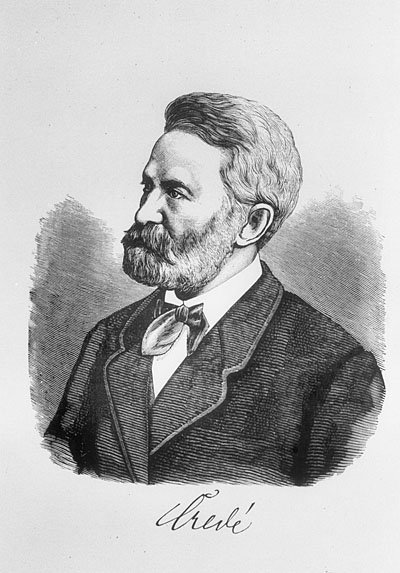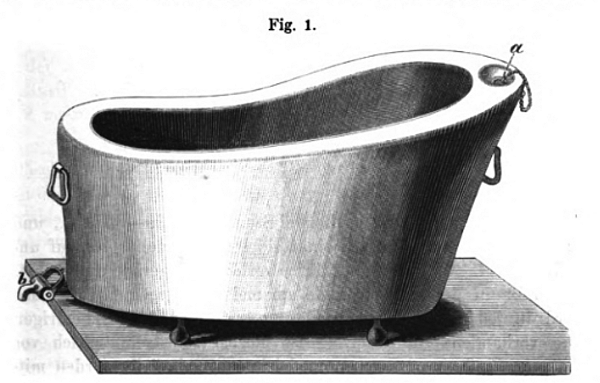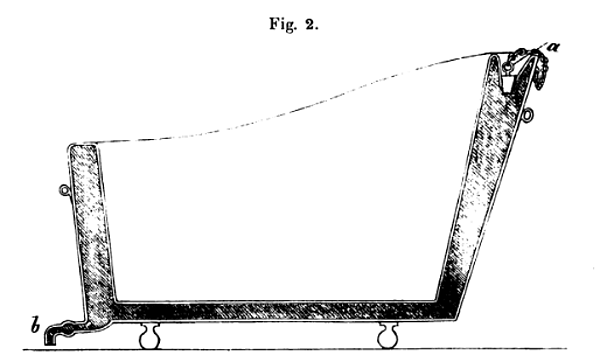Carl Siegmund Franz Credé (1819-1892)

Carl Siegmund Franz Credé was a German gynecologist and obstetrician. He was born December 23, 1819 in Leipzig, and died March 14, 1892. He invented an incubator in 1861 based on warm water flowing through the double-walls of a tub (called a “Wärmewanne”), and continued to use it in his work at the Leipzig Maternity Clinic for at least 20 years. He published the results of his incubator work in 1884 (see link below).
Carl Siegmund Franz Credé spent his student years in Heidelberg and Berlin, where he was conferred doctor of medicine in 1842. Following a one year scientific journey in Europe he became assistant physician at the obstetrical clinic in Berlin under Busch. In 1850 he became a Privatdozent of Obstetrics at the University of Berlin. In 1852 he became the director of the Berlin school for midwives and chief physician of the delivery department, as well as director of a gynecological department established by him at the Berlin Charité.
In 1856 Credé was made professor of obstetrics at the University of Leipzig, where he was, once more, entrusted with the directorship of the school of midwifery and became director of the maternity unit. Here he established a clinic of obstetrics and gynecology, and established a separate department of women’s diseases at the maternity unit. Credé, an excellent teacher as well as a competent organizer, received the title of Hofrat (court counsellor) in 1860, and that of privy medical counsellor in 1870. He is remembered for having introduced the use of silver nitrate eyedrops as an effective preventative for ophthalmia neonatotorum. The silver nitrate solution is sometimes referred to as “Credé’s prophylaxis” in medical literature.
Besides his practical duties he found time for numerous written works. He worked up a textbook on midwifery well known in his days and republished it. He also edited the Monatsschrift für Geburtskunde from 1853 to 1869, and after 1870 the Archiv für Gynäkologie.
A drawing of the warming tub (from Credé’s paper) is shown below.


“In the 1860s, obstetrician Carl Credé in Germany built his first infant incubator. Pediatrician Julius Hayes Hess, in his 1922 book Premature and Congenitally Diseased Infants, noted that writers from France often attributed the origin of the infant incubator to Denucé. However, Credé created his model independently of Denucé. Credé built and implemented his incubator model in 1861 while serving as the director of the Leipzig Maternity Clinic, later renamed as the Leipzig University Gynecological Clinic in Leipzig, Germany. Credé’s incubator was also a double-walled metal tub, but it differed from Denucé’s model in that it circulated warm water to heat the surrounding walls. Instead of keeping the incubator on the floor, Credé placed it on a stand with a hose attachment that connected to a hot water faucet, making it easier to replace water as it dissipated the heat.” — The Infant Incubator in Europe (1860-1890), embryo.asu.edu/pages/infant-incubator-europe-1860-1890
- Carl Siegmund Franz Credé (Wikipedia)
- “Dr Carl Credé (1819–1892) and the prevention of ophthalmia neonatorum” by P. M. Dunn, BMJ
- Credé’s paper “Ueber Erwärmungsgeräthe für frühgeborene und schwächliche kleine Kinder” (German)
- Credé’s paper “Concerning Warming Devices for Prematures and Feeble Tiny Children” (English with the help of Google Translate)
- “Dr Carl Credé (1819-1892) and the prevention of ophthalmia neonatorum,” by Peter M. Dunn, Archives of Disease in Childhood: Fetal & Neonatal Edition. 83(2):F158-9, 2000 Sep.
Last Updated on 04/05/23